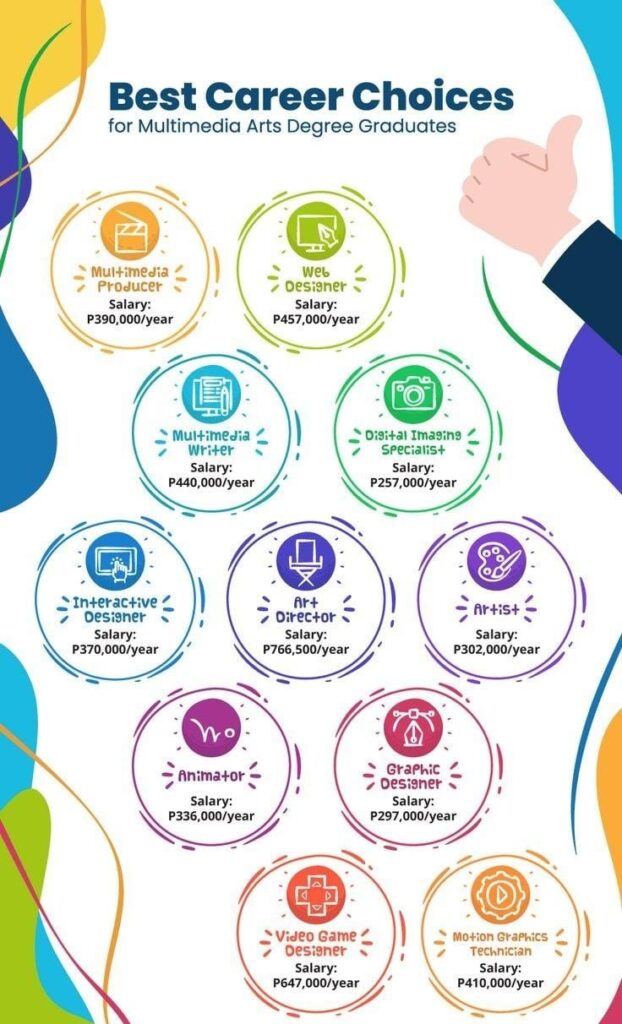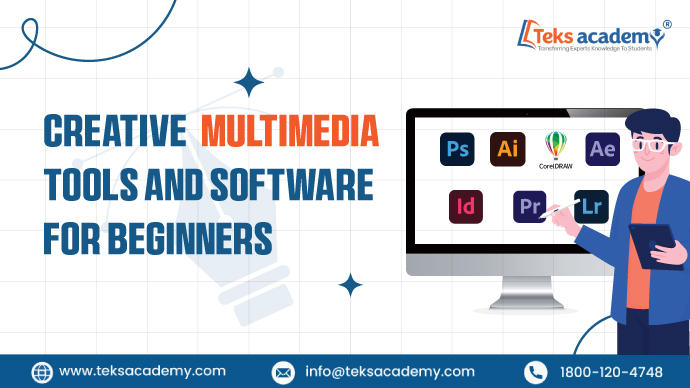Multimedia is the presentation of text, pictures, audio, and video with links and tools that allow the user to navigate, engage, create, and communicate using a computer. Multimedia is being employed in a variety of disciplines, including education, training, and business.
Applications of Multimedia
- Education: In education, multimedia is becoming increasingly popular. It is often used to produce study materials for pupils and to ensure that they have a thorough comprehension of various disciplines.
- Entertainment- Multimedia is the only way to achieve difficult effects and actions. The entertainment sector makes extensive use of multimedia
- Business- Marketing, advertising, product demos, presentation, training, networked communication, etc. are applications of multimedia that are helpful in many businesses etc.
- Technology and Science: in the sphere of science and technology, multimedia has a wide range of applications. It can communicate audio, films, and other multimedia documents in a variety of formats.
- Engineering: Multimedia is frequently used by software engineers in computer simulations for military or industrial training. It’s also used for software interfaces created by creative experts and software engineers in partnership.
Components of Multimedia
Graphics – on-text information, such as a sketch, chart, or photograph, is represented digitally. Graphics add to the appeal of multimedia applications. In many circumstances, people dislike reading big amounts of material on computers
Animation – A presentation can also be made lighter and more appealing by using animation. In multimedia applications, animation is quite popular. The following are some of the most regularly used animation viewing programs: Fax Viewer, Internet Explorer, etc.
Video – Photographic images that appear to be in full motion and are played back at speeds of 15 to 30 frames per second. The term video refers to a moving image accompanied by sound, such as a television picture.
There are numerous multimedia tools and software available for creatives across various domains like graphic design, video editing, animation, audio production, and more. Here’s a list of some top ones across different categories.
TOOLS:
Canva: It offers a wide range of customizable templates for various purposes such as social media graphics, presentations, posters, flyers, and more, Canva makes it simple for users to bring their ideas to life without the need for extensive design skills.
FIGMA: Figma is a collaborative web application for interface design, with additional offline features enabled by desktop applications for macOS and Windows
Adobe Express: A web and mobile design app that can help web designers and business owners create multimedia content
Animoto: Animoto is a cloud-based video creation service that allows users to make slideshows and presentations using photos, music, and video clips.
SOFTWARES:

Adobe Premiere Pro: Adobe Premiere Pro is a professional video editing software used by filmmakers, videographers, and content creators to edit, manipulate, and enhance video footage.
Audacity: Audacity can be used for post-processing of all types of audio, including effects such as normalization, trimming, and fading in and out
Adobe Photoshop: Photoshop is an image creation, graphic design and photo editing software developed by Adobe. The software provides many image editing features for pixel-based images, raster graphics and vector graphics.
These are just a few examples, and there are many other tools and software available depending on your specific needs and preferences,
PURPOSE: The main theme is to create compelling digital experiences for various purposes, including entertainment, marketing, education, and communication multimedia is used.
Where do you learn multimedia?
Multimedia courses cover a range of subjects, including animation, graphic design, interactive media, video production, and user experience (UX) design. Students learn to use industry-standard software and develop technical and artistic skills. Some say that multimedia design is a complete career in the design world because it combines different communication techniques with knowledge about creating audiovisual content. Attending workshops, seminars, and conferences related to multimedia can offer opportunities to learn from industry experts, network with professionals, and stay updated on the latest trends and technologies in the field.
Multimedia career wise:
Multimedia design is a fast-growing and exciting career field in the arts. Here are some career paths you can pursue with a multimedia course.

Graphic Designer: A graphic designer combines technical skills with creativity to craft visually appealing props, sets, and costumes for a variety of clients, including advertising companies, film studios, and game companies. They use their expertise in design software and artistic flair to bring concepts to life in print, digital, and multimedia formats.
Animator: Animators are artists who utilize their skills in art, design, and creativity to produce original visualizations for various products, including animated films, commercials, and digital media. They bring characters, objects, and environments to life through movement, using traditional hand-drawn techniques or digital animation software.
Art Director: As an art director, you’re responsible for guiding the visual and written direction of projects. This involves overseeing the design of artwork and copy, ensuring that it aligns with the project’s objectives and effectively communicates the intended message to the audience.
Web Designer: Beginning as a graphic designer, logo designer, or multimedia designer, a web designer evolves into a project manager who leads website redesign projects. They blend technical skills with design expertise to create visually appealing and user-friendly websites that meet the needs of clients and users alike.
Video Editor: Collaborating closely with directors, video editors play a crucial role in shaping the final narrative of a video production. They meticulously cut and rearrange scenes, add visual effects and sound effects, and fine-tune the pacing to create a seamless and engaging viewing experience.
Video Game Designer: Video game designers are the creative minds behind the entire gaming experience. From conceptualizing the game’s plot and characters to designing gameplay mechanics and visual aesthetics, they orchestrate every aspect of the gaming journey to captivate players and immerse them in unique virtual worlds.
Multimedia Designer: Serving as a bridge between different disciplines, multimedia designers integrate various forms of media to meet the diverse needs of clients. They combine elements such as text, graphics, audio, and video to create interactive and engaging experiences across platforms like websites, mobile apps, and presentations.
Multimedia Specialist: As a multimedia specialist, you specialize in creating digital animations, computer games, and other IT-based media features. You possess a deep understanding of multimedia technologies and employ your expertise to develop innovative and impactful content that resonates with audiences in today’s digital landscape.






